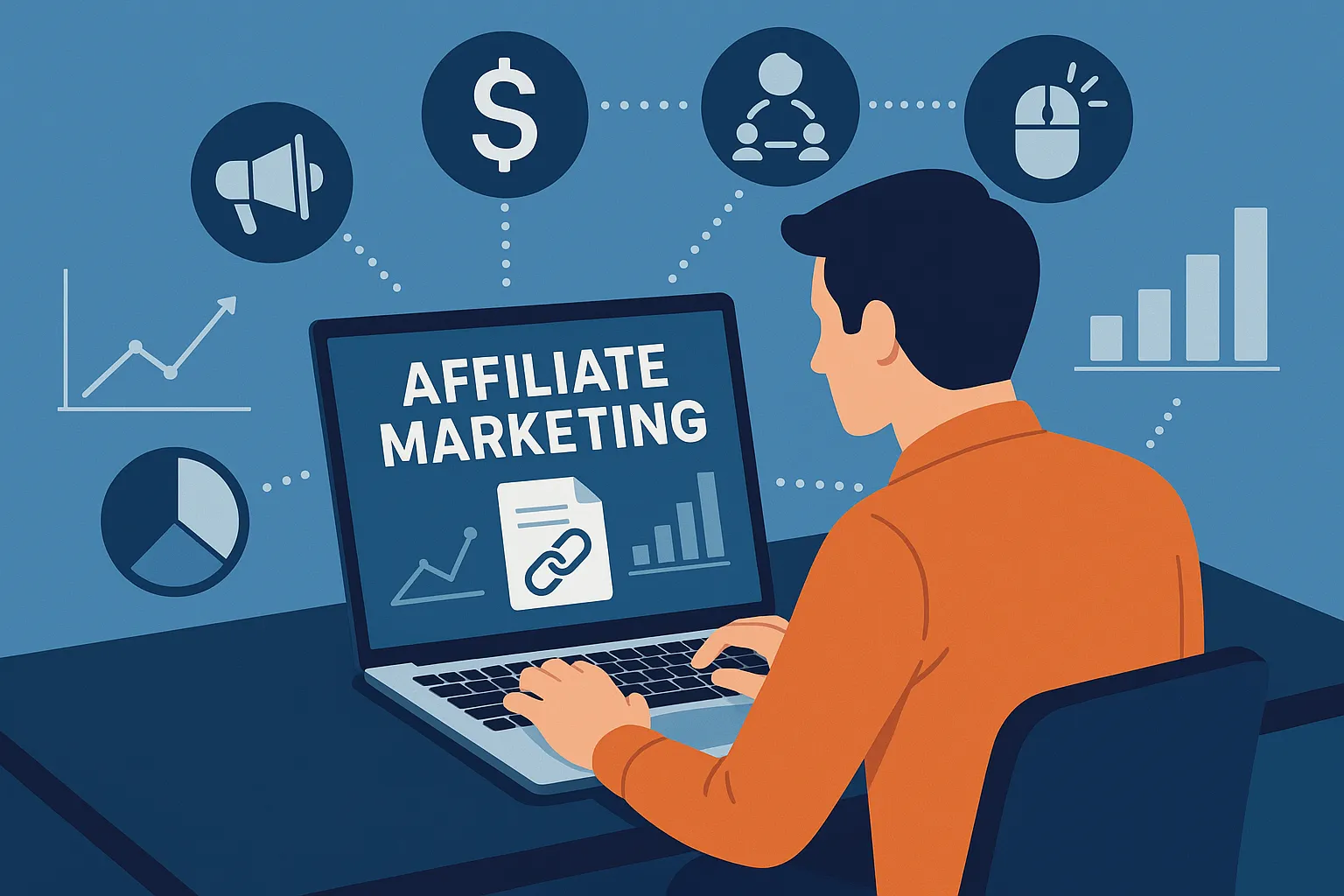Now Reading: Proven Strategies to Drive Traffic to Your Affiliate Links and Boost Commissions
-
01
Proven Strategies to Drive Traffic to Your Affiliate Links and Boost Commissions
Proven Strategies to Drive Traffic to Your Affiliate Links and Boost Commissions

Are you struggling to generate meaningful revenue from your affiliate marketing efforts? Understanding how to attract targeted visitors to your offers can dramatically increase your conversion rates and commission earnings. In this comprehensive guide, I’ll share proven techniques to drive traffic to your affiliate links and transform your marketing efforts into a reliable income stream.
Key Takeaways
To drive traffic to your affiliate links, focus on these proven methods:
- Create high-quality content optimized for SEO
- Leverage social media platforms strategically
- Build an email list for direct promotion
- Use YouTube and video marketing
- Participate in relevant online communities
- Consider paid advertising for faster results
- Optimize your website for conversions
Let’s dive into each strategy in detail so you can start implementing them right away.
SEO: The Foundation Of Affiliate Traffic
When it comes to driving sustainable, free traffic to affiliate links, search engine optimization (SEO) stands as the cornerstone strategy. I’ve seen firsthand how a well-optimized website can continue to bring in targeted visitors for years with minimal ongoing effort.
Keyword Research For Affiliate Success
The journey begins with finding the right keywords. These are the search terms your potential customers are using when looking for products or information related to your niche. I recommend focusing on:
- Long-tail keywords with three or more words, which typically have less competition and higher conversion rates
- Buyer-intent keywords that indicate someone is ready to purchase (terms like “best,” “review,” “buy,” or “top”)
- Question-based keywords that allow you to address specific problems your audience faces
Tools like Google Keyword Planner, Ahrefs, or even free alternatives like Ubersuggest can help you identify valuable keywords with decent search volume and manageable competition.
Creating SEO-Optimized Content
Once you’ve identified your target keywords, it’s time to create content that ranks well and converts visitors. I’ve found these approaches particularly effective:
- Product reviews that thoroughly examine features, benefits, pros, and cons
- Comparison posts that help readers choose between similar products
- Tutorial content showing how to solve problems using affiliate products
- Resource lists featuring curated collections of recommended tools or products
When creating this content, naturally incorporate your keywords into:
- Page titles and H2/H3 headings
- The first 100 words of your content
- Image alt text
- Meta descriptions
- URL structures
Remember that quality matters more than keyword density. Google rewards content that provides genuine value to readers, so focus on being helpful rather than stuffing keywords.
Technical SEO Considerations
Beyond content, technical aspects of your site significantly impact your rankings. I make sure to:
- Optimize site speed by compressing images, using caching, and choosing a good hosting provider
- Ensure mobile responsiveness since most users browse on smartphones
- Create a logical site structure with clear navigation and internal linking
- Secure my site with HTTPS to build trust with both visitors and search engines
- Submit a sitemap to Google Search Console for better indexing
These technical optimizations create a solid foundation that helps all your content perform better in search results.
Useful Articles:
Leveraging Social Media To Promote Affiliate Links
Social media platforms offer tremendous opportunities to drive traffic to affiliate links when used strategically. I’ve discovered that success on social media isn’t about being everywhere at once, but rather focusing on platforms where your target audience spends their time.
Platform-Specific Strategies
Each social media platform has unique characteristics that require tailored approaches:
- Create visually appealing content showcasing products in real-life situations
- Use Instagram Stories with swipe-up links (if you have 10,000+ followers)
- Add a link in your bio and direct followers to it in your posts
- Create engaging reels demonstrating product benefits
TikTok
- Create short, entertaining videos demonstrating products
- Focus on authentic, native content rather than obvious advertising
- Use trending sounds and hashtags to increase visibility
- Direct viewers to your profile link
- Share blog posts containing affiliate links to your page or relevant groups
- Create dedicated posts about products with personal recommendations
- Use Facebook Stories to highlight limited-time offers
- Consider creating a Facebook group around your niche to build community
- Create eye-catching pins linking to your affiliate content
- Organize boards by topic or product category
- Use rich pins to provide more context
- Pin consistently and at optimal times
- Share quick tips related to your affiliate products
- Participate in relevant conversations and threads
- Use hashtags strategically to increase visibility
- Mix promotional tweets with valuable, non-promotional content
Building An Engaged Following
Regardless of platform, building an engaged audience requires:
- Consistency in posting schedule and content quality
- Authenticity in sharing your genuine experiences with products
- Engagement with your followers through comments and messages
- Value-first approach where promotional content is balanced with helpful information
I’ve found that the most successful affiliate marketers on social media are those who build relationships first and promote second. When your audience trusts your recommendations, conversion rates naturally improve.
Social Media Content Ideas For Affiliate Marketers
To keep your social feeds fresh and engaging, try these content types:
- Before/after demonstrations
- Day-in-the-life content showing how you use products
- Quick tips related to your niche
- Polls asking followers about their challenges (which you can address with affiliate products)
- User-generated content from satisfied customers
- Limited-time offers or special deals
Remember to always disclose your affiliate relationships clearly on social media to maintain trust and comply with regulations.
Email Marketing: Your Direct Line To Potential Customers
Email marketing remains one of the most effective channels for driving traffic to affiliate links, with average ROI often exceeding 40:1. I’ve built several successful affiliate campaigns primarily through email because it provides direct access to an audience that has already expressed interest in your niche.
Building A Quality Email List
The foundation of effective email marketing is a quality list of subscribers who have explicitly opted in to hear from you. I focus on these strategies:
- Create valuable lead magnets like ebooks, checklists, or templates related to your niche
- Place strategic opt-in forms on your highest-traffic pages and blog posts
- Use exit-intent popups to capture visitors before they leave your site
- Offer content upgrades specific to individual blog posts
- Run contests or giveaways requiring email subscription to enter
Quality always trumps quantity when it comes to email lists. I’d rather have 500 engaged subscribers than 5,000 who never open my emails.
Crafting Effective Affiliate Emails
When promoting affiliate products via email, I follow these best practices:
- Tell stories about how the product solved a problem for you or others
- Segment your list to send the most relevant offers to different subscriber groups
- Create a sequence of emails rather than a single promotional message
- Focus on benefits rather than features
- Include clear, compelling calls to action
- Use a conversational tone that builds connection
Here’s a simple email sequence structure I often use:
- Value email: Share useful information related to the problem the product solves
- Problem agitation: Discuss the challenges your subscribers face
- Solution introduction: Introduce the product as a potential solution
- Case study/testimonial: Share success stories
- FAQ/objection handling: Address common concerns
- Final call to action: Create urgency for taking action
Email Automation For Passive Affiliate Income
Setting up automated email sequences allows you to drive traffic to affiliate links on autopilot. I recommend:
- Welcome sequences for new subscribers that gradually introduce affiliate offers
- Abandoned cart sequences if you’re promoting products with cart tracking
- Holiday or seasonal promotions scheduled in advance
- Evergreen launch sequences that new subscribers receive at predetermined intervals
These automated sequences continue working for you 24/7, making email one of the most efficient traffic sources for affiliate links.
Useful Articles:
Content Marketing Beyond Blog Posts
While blog posts form the backbone of many affiliate marketing strategies, diversifying your content types can help you reach different audience segments and drive more traffic to your affiliate links.
YouTube And Video Marketing
Video content has exploded in popularity, and I’ve found it to be incredibly effective for affiliate marketing. Here’s how I approach it:
- Create product reviews and unboxings showing the product in action
- Develop tutorial videos demonstrating how to solve problems using affiliate products
- Produce comparison videos helping viewers choose between alternatives
- Share behind-the-scenes content showing how you personally use products
The key to success on YouTube is providing genuine value while naturally incorporating affiliate products. I always disclose affiliate relationships clearly in both the video and description.
Podcasting For Affiliate Promotion
Podcasting builds deep connections with your audience through the intimacy of audio. I recommend:
- Interviewing industry experts and mentioning relevant affiliate products
- Creating solo episodes focused on solving problems related to your niche
- Discussing case studies where affiliate products played a role in success
- Answering listener questions with product recommendations when appropriate
Podcast listeners tend to be highly engaged, making them excellent prospects for affiliate offers. Include your affiliate links in the show notes for easy access.
Webinars And Live Streams
Live content creates urgency and interaction opportunities that can drive immediate traffic to affiliate links:
- Host educational webinars that naturally incorporate affiliate products
- Run live product demonstrations showing real-time results
- Create Q&A sessions addressing audience challenges
- Offer special limited-time bonuses for attendees who purchase through your links
The interactive nature of live content allows you to address objections in real-time, often resulting in higher conversion rates.
Community Engagement And Relationship Building
Some of my most successful affiliate campaigns have come from building relationships within existing communities rather than trying to drive cold traffic. This approach focuses on providing value first and promoting second.
Forum And Q&A Site Participation
Platforms like Quora, Reddit, and niche-specific forums can drive significant traffic when approached correctly:
- Answer questions thoroughly and helpfully without immediately pushing affiliate links
- Establish expertise through consistent, valuable contributions
- Include contextual affiliate recommendations only when truly relevant
- Create resource-rich profile descriptions that link to your content
- Follow platform rules regarding promotional content to avoid bans
I’ve found that building a reputation as a helpful community member first leads to much better results than jumping straight into promotion.
Guest Posting And Collaboration
Leveraging other people’s audiences can rapidly expand your reach:
- Write guest posts for established blogs in your niche
- Appear on podcasts as an expert guest
- Co-create content with complementary creators
- Participate in expert roundups and industry reports
- Contribute to collaborative resources like ebooks or webinar series
When pursuing these opportunities, focus on providing exceptional value to the host’s audience rather than just securing a backlink or affiliate promotion.
Building Your Own Community
Creating your own community around your niche gives you a direct channel to promote affiliate offers:
- Start a Facebook group focused on solving specific problems
- Create a Discord server for real-time interaction
- Host regular virtual meetups to build relationships
- Develop membership programs with exclusive content and offers
Communities you build yourself often have the highest trust levels, leading to better conversion rates on affiliate promotions.
Useful Articles:
Paid Advertising For Immediate Traffic
While organic methods are cost-effective in the long run, paid advertising can drive immediate traffic to affiliate links. I use these approaches selectively to complement organic strategies.
Google Ads For Affiliate Marketing
Google Ads allows you to target people actively searching for solutions:
- Focus on buyer-intent keywords with commercial purpose
- Create dedicated landing pages for each campaign rather than sending traffic directly to affiliate links
- Use ad extensions to improve visibility and click-through rates
- Implement conversion tracking to measure ROI accurately
- Start with small budgets and scale based on performance
Remember that some affiliate programs have restrictions on using their brand names in paid search, so always check the terms before launching campaigns.
Social Media Advertising
Platforms like Facebook, Instagram, and Pinterest offer powerful targeting options:
- Create custom audiences based on website visitors or email subscribers
- Develop lookalike audiences to find new prospects similar to your best customers
- Test different ad formats (image, video, carousel, etc.)
- Implement retargeting campaigns to re-engage people who viewed your content
- Optimize for specific objectives aligned with your affiliate goals
I’ve found that promoting valuable content rather than direct affiliate links often works better for social media ads, as it builds trust before asking for the click.
Native Advertising And Content Discovery
Platforms like Outbrain and Taboola can drive traffic from related content across the web:
- Create curiosity-driven headlines that encourage clicks
- Use high-quality images that stand out in content feeds
- Direct traffic to valuable content rather than direct affiliate offers
- Test multiple variations to find winning combinations
- Start with broader targeting and narrow based on performance
Native advertising often works well for affiliate products with broader appeal and higher commissions that can justify the ad spend.
Website Optimization For Conversion
Driving traffic is only half the battle-you also need to convert that traffic into clicks on your affiliate links. I focus on these optimization strategies:
Strategic Link Placement
Where and how you place affiliate links significantly impacts click-through rates:
- Include links early in content for readers who are ready to buy
- Add links throughout longer content at natural decision points
- Use both text links and buttons for different user preferences
- Make sure links are mobile-friendly and easy to click on small screens
- Consider using comparison tables for multiple affiliate products
I’ve found that contextual links within helpful content typically outperform obvious banner ads or promotional sections.
Call-To-Action Optimization
Strong calls to action encourage visitors to click your affiliate links:
- Use action-oriented language that creates urgency
- Highlight the specific benefit of clicking the link
- Test different CTA variations to find what resonates with your audience
- Use contrasting colors to make buttons stand out
- Consider adding social proof near CTAs to build confidence
Small tweaks to your CTAs can lead to significant improvements in click-through rates.
Page Speed And User Experience
A frustrating user experience kills conversions before they happen:
- Optimize image sizes without sacrificing quality
- Minimize plugin usage on WordPress sites
- Implement caching to improve load times
- Create a logical content structure with clear headings
- Ensure mobile responsiveness across all devices
I regularly audit my sites for user experience issues that might prevent visitors from reaching and clicking my affiliate links.
Tracking And Optimization
To continuously improve your results, implement robust tracking and regular optimization:
- Use link management tools like Pretty Links or ThirstyAffiliates to track clicks
- Implement Google Analytics to understand traffic sources and user behavior
- Set up goal tracking for affiliate link clicks
- A/B test different approaches to content, placement, and CTAs
- Regularly review performance data and adjust strategies accordingly
Driving traffic to affiliate links requires a multi-faceted approach combining SEO, content marketing, social media, email, community building, and strategic optimization. By implementing these proven strategies consistently, you can create a sustainable system that generates both immediate and long-term traffic to your affiliate links, ultimately increasing your commission income and building a more resilient affiliate marketing business.



















